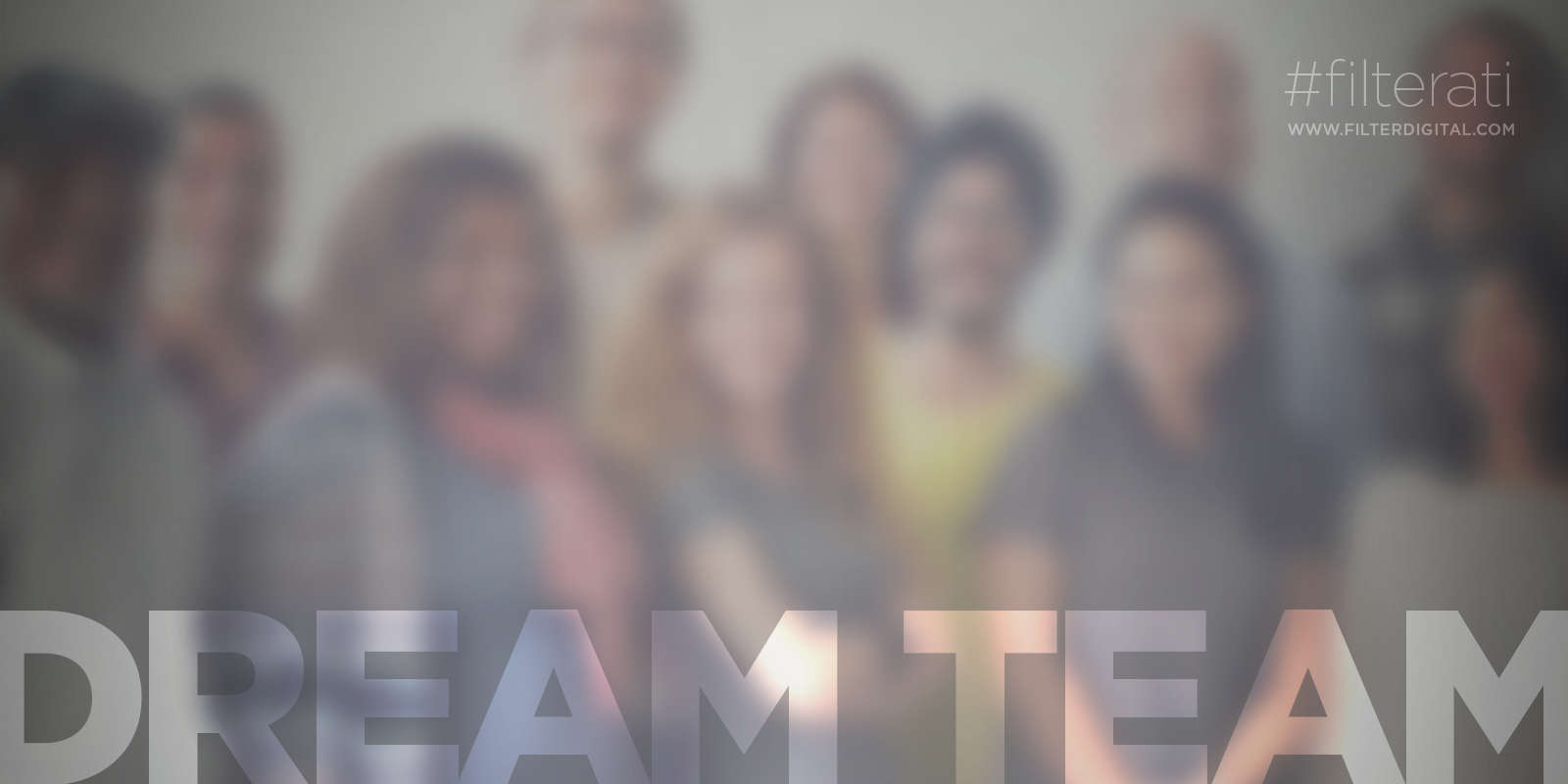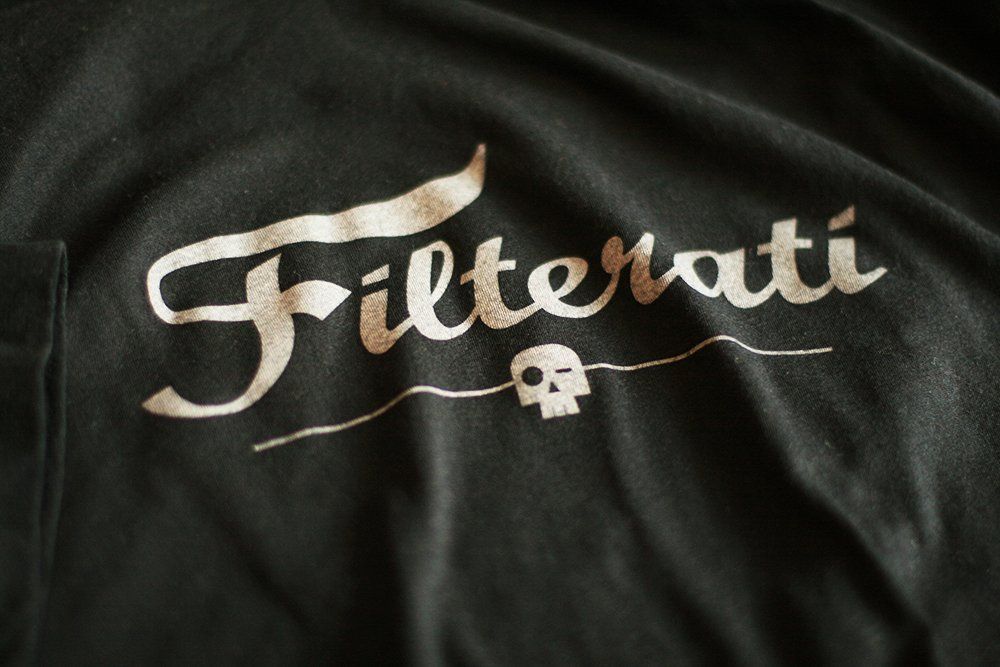During my tenure at Filter, one of my responsibilities was to reimagine the company's brand in a way that captured the essence of Filter's unique culture – 50 full-time employees supporting a network of over 10 thousand contractors up and down the West coast — which meant understanding the thoughts and feelings of Filter folks beyond "core staff", and being candid with ourselves about what we discovered...
- Shifted the company's focus from quantity to quality — shedding our status as "the West Coast's largest talent network" and instead focusing on helping the most active and committed members
- Refreshed the aesthetic, voice, and tone of the company's brand to reflect our more personal, more human-centric mindset.
- Introduced "Filterati" as the collective monicker for members of the talent network — a label which they still identify with and embrace to this day

...we were a Stage-3 tribe on a good day
Anyone who's read Dave Logan's book,
Tribal Leadership will recognize this designation — at this stage, team members are in it for themselves and extremely averse to collaboration; their attitude is "I'm great . . . and you're not."
Internal staff was spread across four cities (80% in Seattle) and rarely interacted with each other; the smaller regional offices often felt isolated and forgotten.
There was a cultural rift in the Seattle HQ between those embracing Filter's new digital studio venture and those firmly grounded in Filter's legacy as a staffing firm.
The talent network was being underutilized and often felt underrepresented — internal staff saw them as a resource, not as people with goals, concerns and motivations.
Staff rarely solicited feedback from the talent, giving the perception that the company wasn't interested in learning how to improve things for the collective network.
How might we psychologically and emotionally unite thousands of people across the West coast – most of whom have and will never meet one another – around a common "noble cause"?
First, we ensured the leadership team's full commitment to a potentially lengthy process. We immersed ourselves in the Tribal Leadership book, held planning meetings, and set a clear timeline.
Our initial survey, the quickest way to reach our network, had a lackluster response filled with skepticism. People in the talent network saw it as more empty promises. Clearly, we needed a new approach.
We took a risk by creating a video message. Filter's internal staff and leadership took accountability for how things have been, expressed gratitude to the talent network, and pledged genuine, lasting change.
We published a "manifesto for change" on the company website, and invited everyone to publicly add their name to it — staff, talent and clients.
The video had two significant impacts. First, it cleared the air within Filter's internal staff and served as a powerful "reset moment." It marked a turning point, allowing everyone to move past previous issues and unite for a brighter future.
Second, the video quickly identified those in the talent network seeking change and improvement, particularly those caught in the stage 2 tribal mindset. They received mentoring in tribal leadership principles and were encouraged to mentor others in the network. This process included intentional conversations to understand each individual's stage and core values for tailored mentoring.
We also recognized the need for a partial retraining process in mentoring. This involved altering our communication style and terminology. Like a fresh coat of paint in a room, new terms can change one's perspective.
We consciously adopted new terms for different aspects of our organization:
Network →
Staff, talent →
Contract, placement →
TRIBE
MEMBER
GIG
Network:
Staff, talent:
Contract, placement:
TRIBE
MEMBER
GIG
Choosing quality over quantity
During this transformative period, some challenging decisions had to be made. Not everyone, both internally and in our wider network, embraced the changes. In certain cases, resistance was evident, and we had to make the tough call to part ways with those who were hindering the tribe's progress. This included reducing our talent network.
This process also revealed that only half of our database registrants were active members. A smaller fraction actively participated in the mentorship program. However, over time, we successfully introduced approximately 3,500 individuals to the new tribal mindset and captured their core values.
This transformation meant letting go of a long-standing source of pride: our title of having the largest network of registered creative and technical talent on the West coast. In its place, we prioritized a smaller but more committed tribe.
One aspect we were still refining was the terminology. While "tribe" worked well internally, we were searching for an external term that was unique and resonated with our mission. It needed to evoke a sense of belonging and connection, something that people could readily embrace.
Marketing Director Lisa Weeks and I introduced the term "Filterati," blending "literati" and "glitterati," to create a sense of pride and identity for Filter affiliates. This term and the associated tribal values swiftly gained traction as they stemmed from our efforts to uncover shared cultural threads that united us.
Aligned with the brand's calls for a "new world of work" and "joining the tribe," the Filterati initiative became a defining moment in Filter's history.
Although Filter's brand and website have since evolved, it's gratifying to see them retain key elements of the brand architecture, including the tone and voice content guidelines and tribal values Lisa and I established.
The Filterati spirit even lives on in commissioned creative work by the amazingly talented Danny Schlitz!
WE ARE THE FILTERATI
In the end, the decision to embrace the talent as the faces of the company and our biggest source of pride in the industry resonated deeply with both the people in our network and our clients.

Slide title
Write your caption hereButton
Slide title
Write your caption hereButton
Slide title
Write your caption hereButton
Slide title
Write your caption hereButton
Slide title
Write your caption hereButton
Slide title
Write your caption hereButton
Slide title
Write your caption hereButton
Slide title
Write your caption hereButton
Slide title
Write your caption hereButton




